Woodsmanship is an essential skill for any type of hunting. One of the most important aspects of woodsmanship is tracking animals. Learning how to read the signs and understand what they mean will improve your success rate.
Woodsmanship is mostly learned through experience; being in the woods and constantly investigating what’s around you, both sight and sound. Then, eventually, understand what most of that means. When it comes to turkey hunting, most people don’t realize just how many signs turkeys leave behind! Even more so, determining the age of the sign you find matters, because turkeys do move from area to area, and have their favorite areas at specific times of the year.
So what exactly should you look for when scouting for turkeys? Let’s get into it!
Tracks
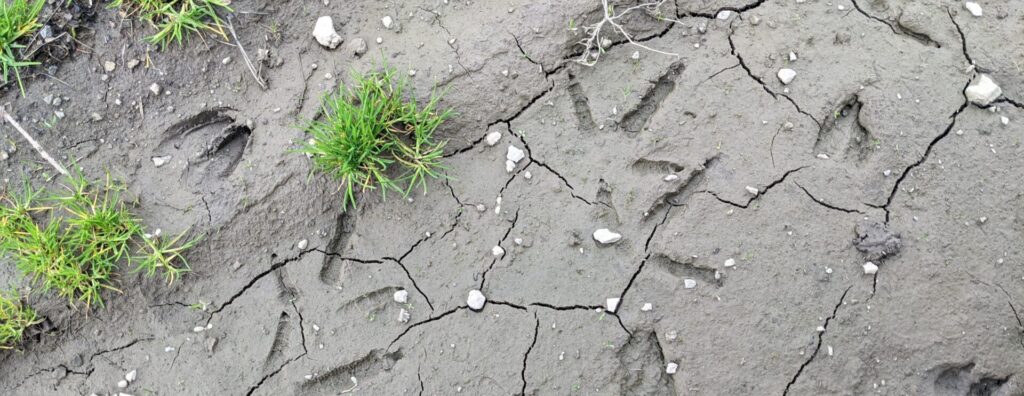
Tracks are the most obvious sign. The wild turkey is the largest ground-nesting bird in North America. The tracks are relatively easy to spot, especially if you know where to look. The most obvious places to look are snow, mud puddles, and soft dirt. Fresh tracks may appear in frost. If you’re dealing with hard pack snow or dirt, or grass, then you might not be able to easily find tracks.
You found some tracks. Now what?
We can tell a fair bit about the turkeys who made them. Toms, the males, have tracks about 4.5″ long. Its middle toe is longer than the other two toes, which is a dead giveaway that a tom made the track. Hen tracks are about an inch smaller, and the middle toe is about the same size as the rest.
You might also be able to determine when the turkeys came through the area. Look at the photo above. If the tracks are well defined and you can see significant detail, the turkey was likely in the area within the past few hours, or within a day. Tracks quickly lose definition from exposure to wind and moisture, and from drying out.
When combined with other signs, we can determine if they use the area frequently, or maybe just pass through the area from time to time. The next time you find turkey tracks, spend the time to know if they are tom or hen and make some guesses on the age of the tracks.
Scat
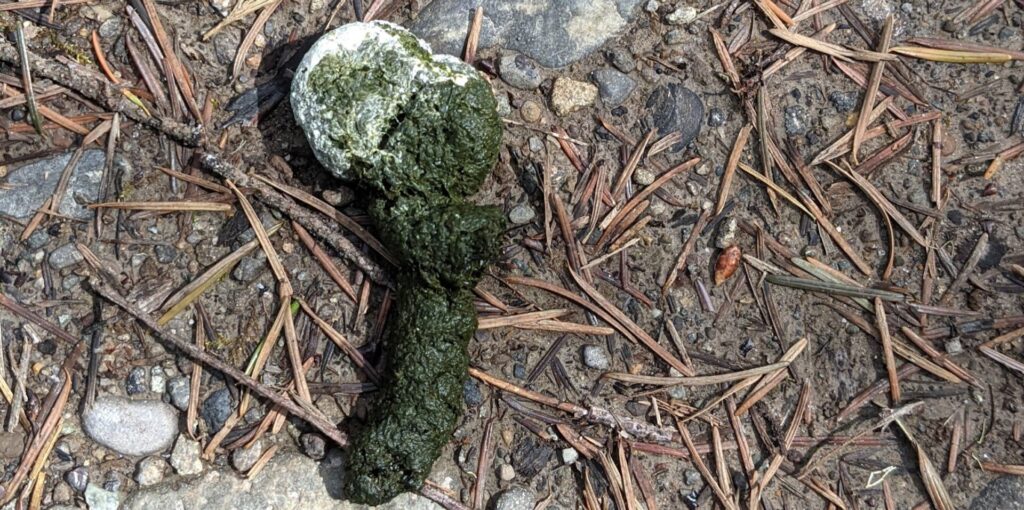
Turkey scat is the second most common sign you’ll see. Hens have coiled scat (like a snail shell), while toms have J-shaped scat, as pictured above.
Determining the age of scat is relatively easy, an indicator of how long ago a bird was in the area, and how often they frequent the area. Fresh scat will contain significant green coloring, and if you don’t see green then that sign is likely more than a couple of days old. The scat tends to dry out quickly in warmer weather and will become dark, almost black. Moisture will also do this, so even though it looks fresh, it may not be.
The white coloring you see in the scat is known as uric acid. Birds do not produce urine, but instead, excrete uric acid in their scat. The color also helps determine the age of the scat. A bright, painted-white look means it’s fresh. Any sort of fading will mean it’s older.
Most male turkey scat is fairly large (usually about the size of a 50¢ piece) and easy to spot, so keep your eyes open!
Feathers
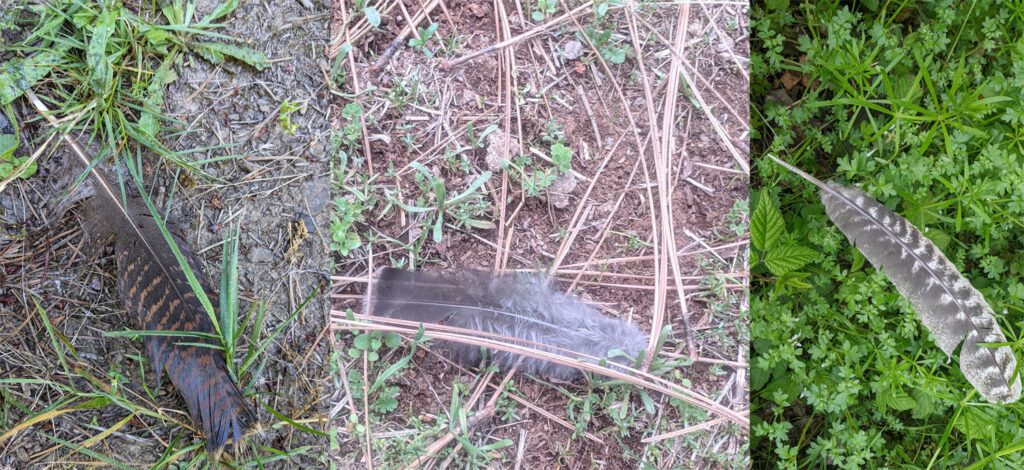
Turkeys have several different types of feathers that are important to learn about. Wing feathers, body feathers, and tail fan feathers are pretty easy to distinguish. It’s common for turkeys to drop wing feathers as they molt. However, if you find areas with lots of body feathers or tail fan feathers, it may indicate a strut zone or high activity zone where toms are battling for dominance. These areas are also great ambush points!
Using the photo collage above, can you identify what parts of the bird these feathers came from?
If you happen across a lot of feathers, or even a pile of feathers, this could be an indication of predation, by hunters or other natural predators. Try to determine what happened to the turkey. Are there piles of predator scat nearby? This can be an indication of pressure on the birds, and they will respond to that pressure by moving away from that area, or just shutting down and not gobbling at all!
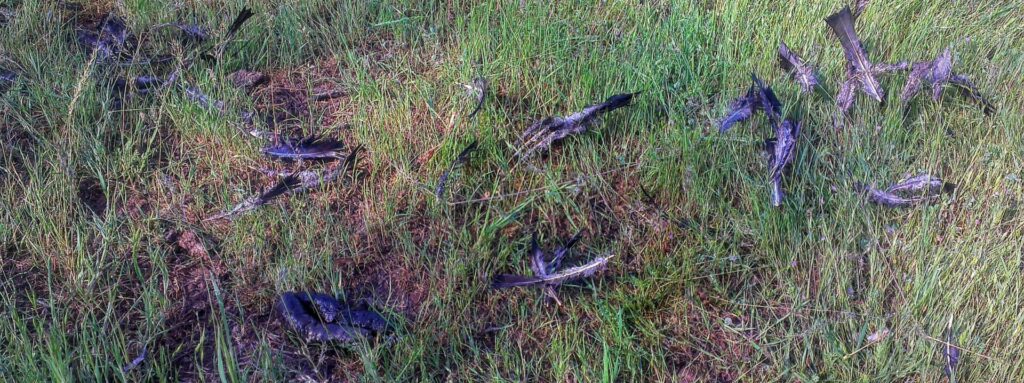
The photo above depicts the carnage of a mountain lion killing a tom. All that’s left are the feathers, likely the big cat carried the bird off to enjoy in a more private area. But if you look closely, you can see the telltale sign he left before heading out!
Wing Drags
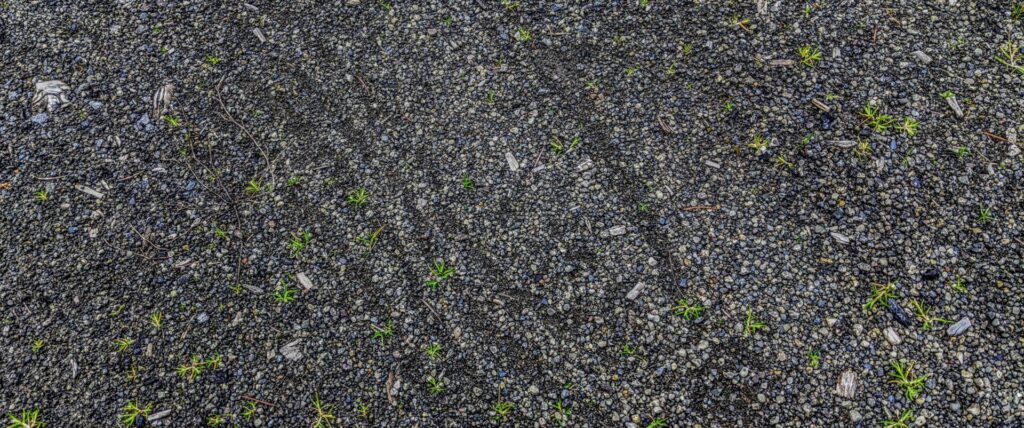
When toms are breeding they will strut. You’ve most likely seen this behavior; the toms will fan up and strut around trying to impress the ladies. When they do this, their wings drop to the ground, and they drag them along, creating drag marks. These marks are pretty easy to identify in loose soils, snow, and mud, but can be harder to see in gravel and other harder substrates. I’ve enhanced the photo above for you to show you exactly what you’re looking for in graveled areas.
If you discover areas where there are a lot of wing drags, it may indicate a “strut zone”. Strut zones are often used regularly and are excellent choices to set up decoys. It may require some patience, and soft calling may produce better results in these areas. Learning to use a mouth call to gobble can be very effective, making a boss tom think another male is trying to take over his area!
Scratching
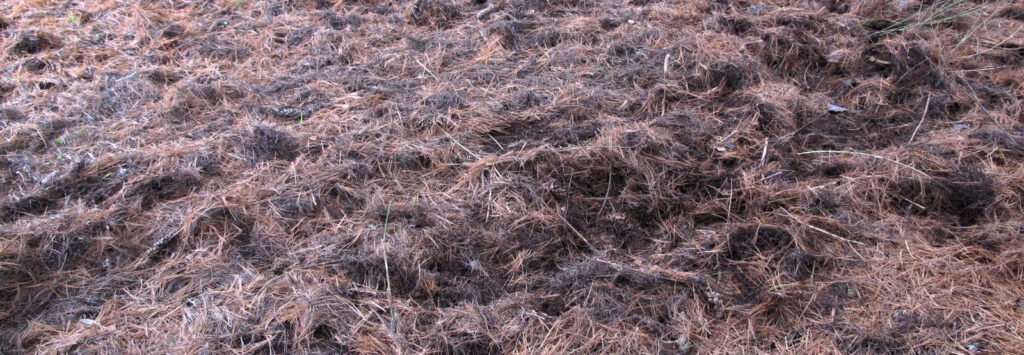
Turkeys spend their lives foraging for bugs, frogs, lizards (and other small animals), seeds, flowers, and other edibles. A major portion of their time every day is spent scratching to find food sources.
Look at leaves and conifer duff for signs of scratching. Looking for areas where scratching is fresh will give you an indication that the birds are near and commonly feed in these areas. In some heavily used areas, like the photo above, it may look like someone’s been raking the forest floor!
In some regions, it may be difficult to find scratching. The Pacific Northwest represents a challenge because much of the areas turkeys reside in is soft grass or peaty soils without much duff or leaves. The significant rainfall and fungal activity each season causes much of this material to decompose, and not build up. In these types of areas, it’s better to focus on other signs. But if you happen to spot scratching, don’t ignore it!
Dust baths
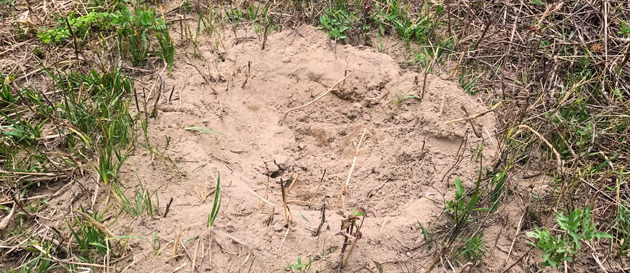
Birds like to be clean, this includes turkeys. Preening feathers ensures that the feathers are waterproofed and insulated. It also helps eliminate pests like fleas, ticks, mites, and chiggers. Turkeys usually spend a couple of hours per day preening, and this usually involves a dust bath.
A person with a keen eye can spot these dust baths, usually 12″-14″ depressions about 2″ deep. Turkeys will generally return to these areas daily, and these spots can be excellent spots to ambush turkeys if you have the patience!
In areas where the dirt is hard-packed or there is a lot of ground cover, look for dust baths in areas where looser, drier soil is likely to be, even on dirt roads.
AUDIBLES
Audible clues are excellent ways to find turkeys. Of course, the most common way to locate turkeys is via gobbles. But an attentive listener can sit and hear hen talk, like yelps, clucks, puts, and purrs. Kee kees are also common. Being able to identify these sounds is essential, so take the time to learn these audibles. You’d be surprised at how often you will hear turkey talk when you’re familiar with the sounds!
The video above, by Chris Walls, is an excellent example of some of the sounds you’ll hear from hens in the woods!
Take the time to get out before the season starts. Spend a lot of time in the woods. Look for clues, and listen. Move slowly and pay attention. Once you’ve located turkey sign, focus on that area and try to figure out what areas the birds like to use at specific times of the day. Eventually, you’ll be able to pattern the flock, which will lead to success!
